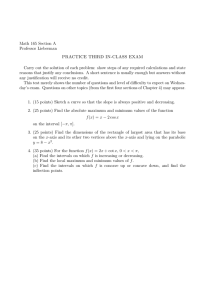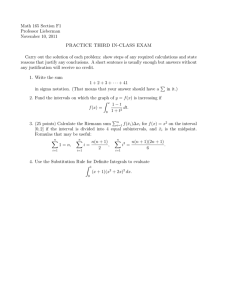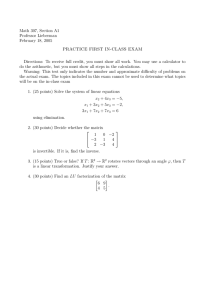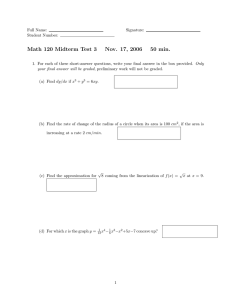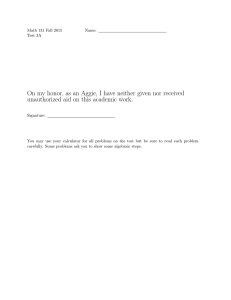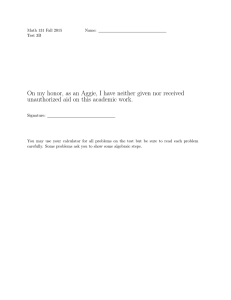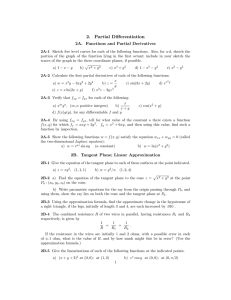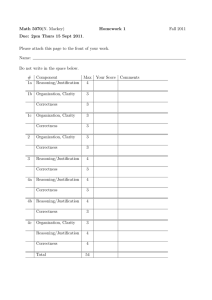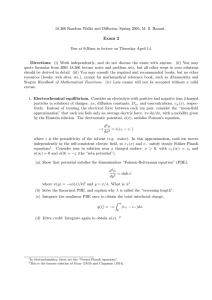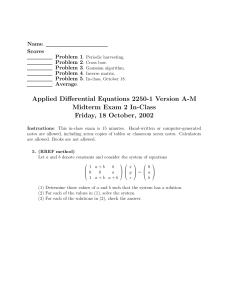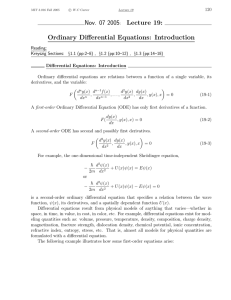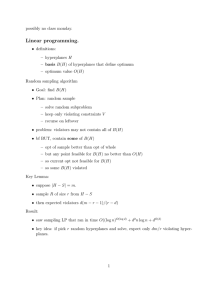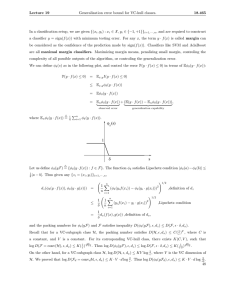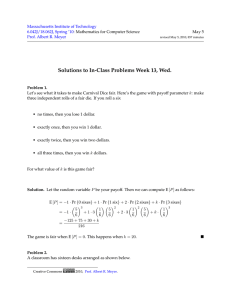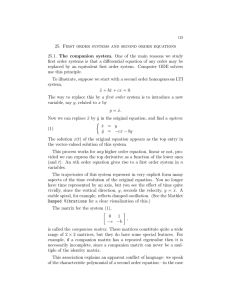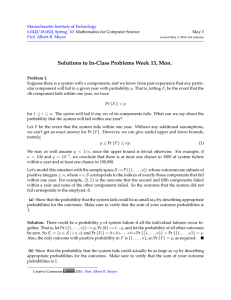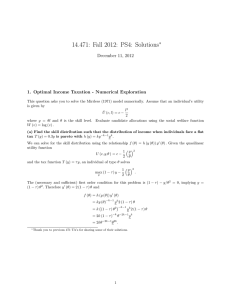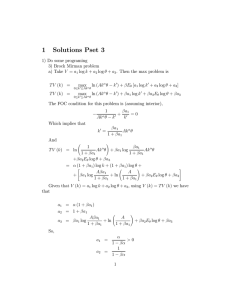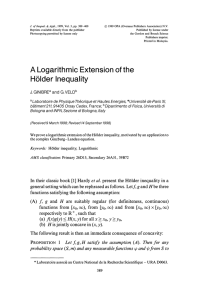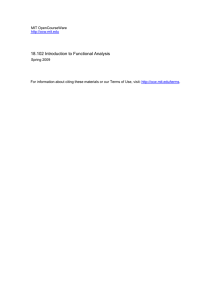Math 165 Professor Lieberman October 21, 2011 PRACTICE SECOND IN-CLASS EXAM
advertisement
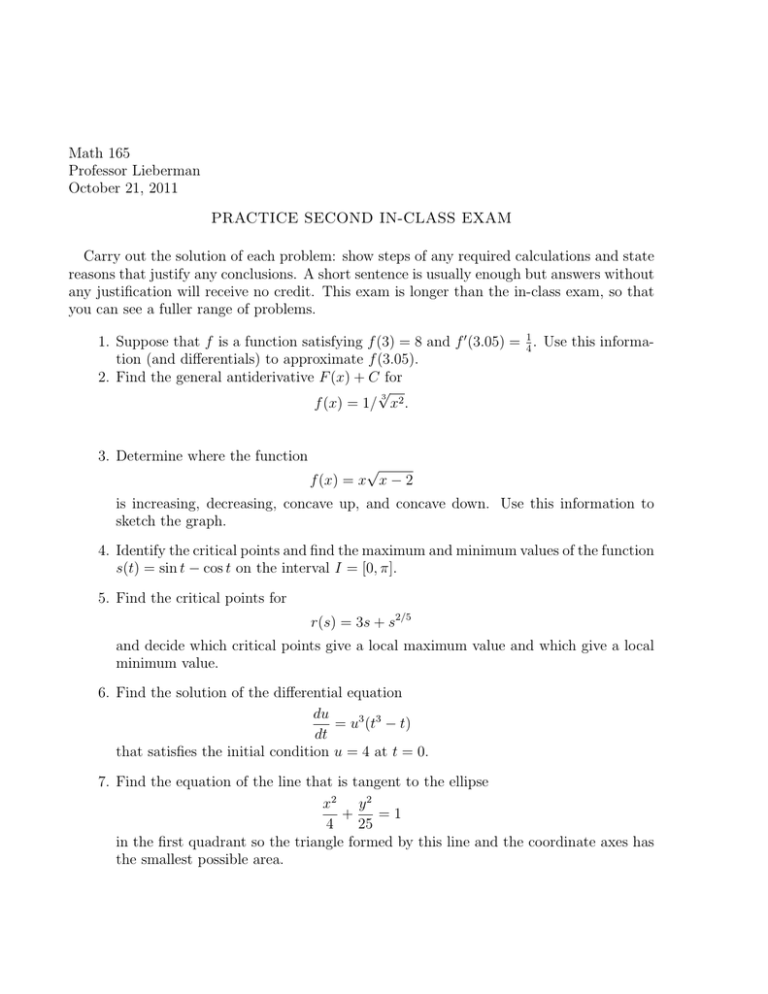
Math 165 Professor Lieberman October 21, 2011 PRACTICE SECOND IN-CLASS EXAM Carry out the solution of each problem: show steps of any required calculations and state reasons that justify any conclusions. A short sentence is usually enough but answers without any justification will receive no credit. This exam is longer than the in-class exam, so that you can see a fuller range of problems. 1. Suppose that f is a function satisfying f (3) = 8 and f ′ (3.05) = 14 . Use this information (and differentials) to approximate f (3.05). 2. Find the general antiderivative F (x) + C for √ 3 f (x) = 1/ x2 . 3. Determine where the function √ f (x) = x x − 2 is increasing, decreasing, concave up, and concave down. Use this information to sketch the graph. 4. Identify the critical points and find the maximum and minimum values of the function s(t) = sin t − cos t on the interval I = [0, π]. 5. Find the critical points for r(s) = 3s + s2/5 and decide which critical points give a local maximum value and which give a local minimum value. 6. Find the solution of the differential equation du = u3 (t3 − t) dt that satisfies the initial condition u = 4 at t = 0. 7. Find the equation of the line that is tangent to the ellipse x2 y 2 + =1 4 25 in the first quadrant so the triangle formed by this line and the coordinate axes has the smallest possible area.

